Special Report
Greatest Professional Athletes With the Shortest Careers

Published:
Last Updated:

Being a professional athlete is fleeting. The average NFL career length is just 3.5 years. The average player lasts 5.6 years in the MLB, 5.5 years in the NHL, and 4.8 years in the NBA.
Superstars like LeBron James, Tom Brady, or Alex Ovechkin have been fortunate enough to stay at the top of their game for the better part of two decades, but not every player is so lucky. Many players have either been forced into early retirement due to injury, or decided that the mental and physical toll of being a pro athlete is no longer worth the paycheck.
24/7 Wall St. used the Sports Reference family of sites to review notable athletes from the NFL, MLB, NBA, and NHL who played well but had their career cut short by injuries or other factors.
There is a saying in sports that father time is undefeated. Even the best players will someday have to retire because they are unable to keep up with the younger and more athletic players entering the league. On occasion, however, great players are able to muster one final great season before calling it quits. These are the players with the best final seasons in sports history.
Click here to see the greatest professional athletes with the shortest careers.
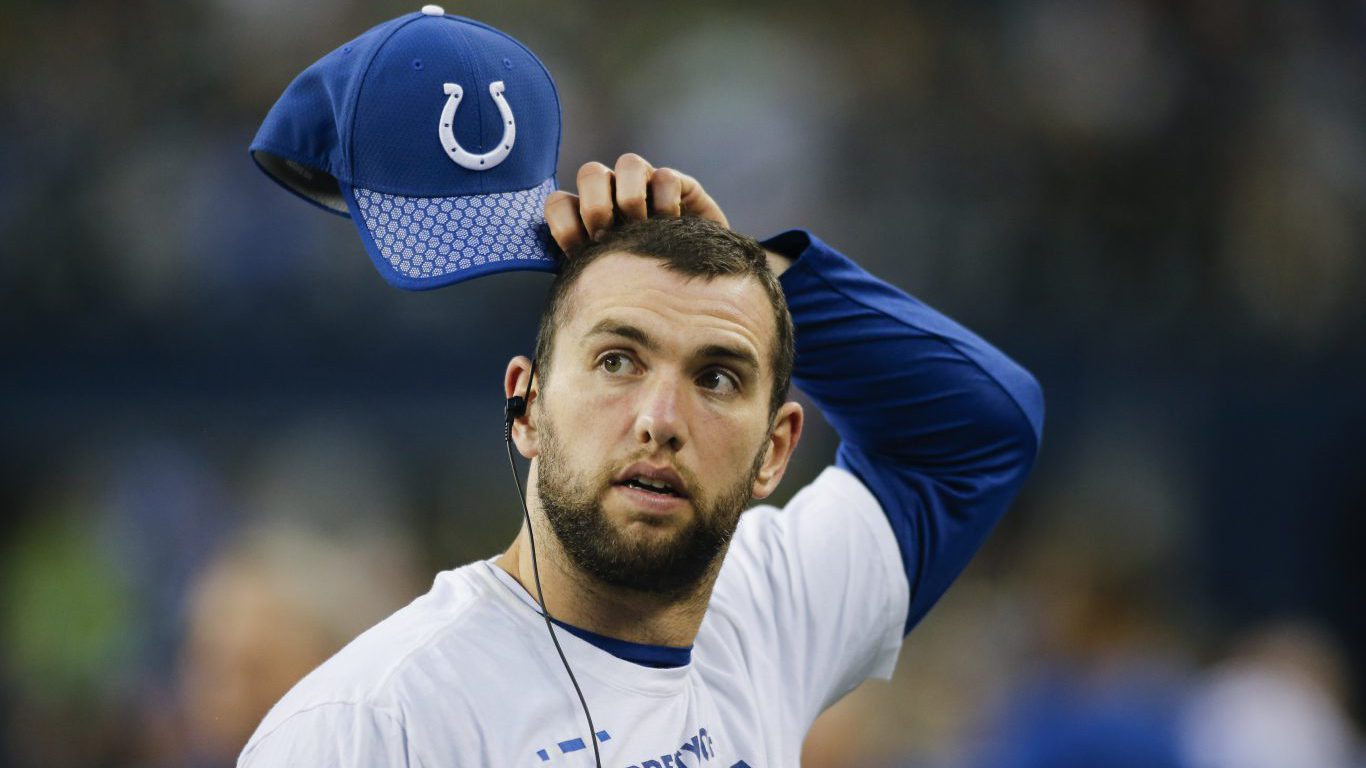
1. Andrew Luck
> Career: 2012-2018
> Team(s): Indianapolis Colts
> Accolades: 4x Pro Bowl
As the 2012 NFL Draft first overall pick, Andrew Luck lived up to the hype, making the Pro Bowl and the playoffs his first three seasons. Luck missed most of the 2015 season with a sprained shoulder, lacerated kidney, and torn ab muscle. He missed a 2016 game with a concussion, then sat out all of 2017 after a surgery to repair an injured shoulder. After playing in all 16 games during the 2018 season, Luck abruptly ended his NFL career at age 29 during the 2019 preseason, citing the physical pain and emotional toll of repeated injuries.
[in-text-ad]

2. Bill Walton
> Career: 1974-1987
> Team(s): Portland Trail Blazers, San Diego/Los Angeles Clippers, Boston Celtics
> Accolades: Hall of Fame, MVP, 2x NBA champion, 2x All-Star
Though Bill Walton’s career lasted about 13 years, he played in less than half of his teams’ games due to injuries. By age 26, Walton had won a championship, an MVP, and two All-Star nods — then he began to miss serious time because of an oft injured left foot. He missed the entire 1978-1979 season, played just 14 games the next season, then missed the next two entire seasons. The only time Walton played more than 70 games in a season was in the 1985-1986 season, when he served as a backup center for the title-winning Boston Celtics. He played just 10 games the next season before suffering a stress fracture in his foot and deciding to call it a career.

3. Sandy Koufax
> Career: 1955-1966
> Team(s): Brooklyn/Los Angeles Dodgers
> Accolades: Hall of Fame, MVP, 3x Cy Young, 3x World Series, 7x All-Star, 5x ERA title
After breaking into the big leagues as a teenager in 1955, Sandy Koufax pitched infrequently before cementing a spot in the Dodgers rotation in 1958. In the 1960s, Koufax had one of the most dominant stretches in sports history, making six straight All-Star games, winning five straight NL ERA titles, earning three Cy Young awards and an MVP on the way to capturing his second and third World Series titles. Koufax’s dominance would unfortunately be cut short by an arthritic left elbow. Doctors warned the Dodgers ace he could lose use of that arm if he kept pitching, so Koufax retired at age 30.
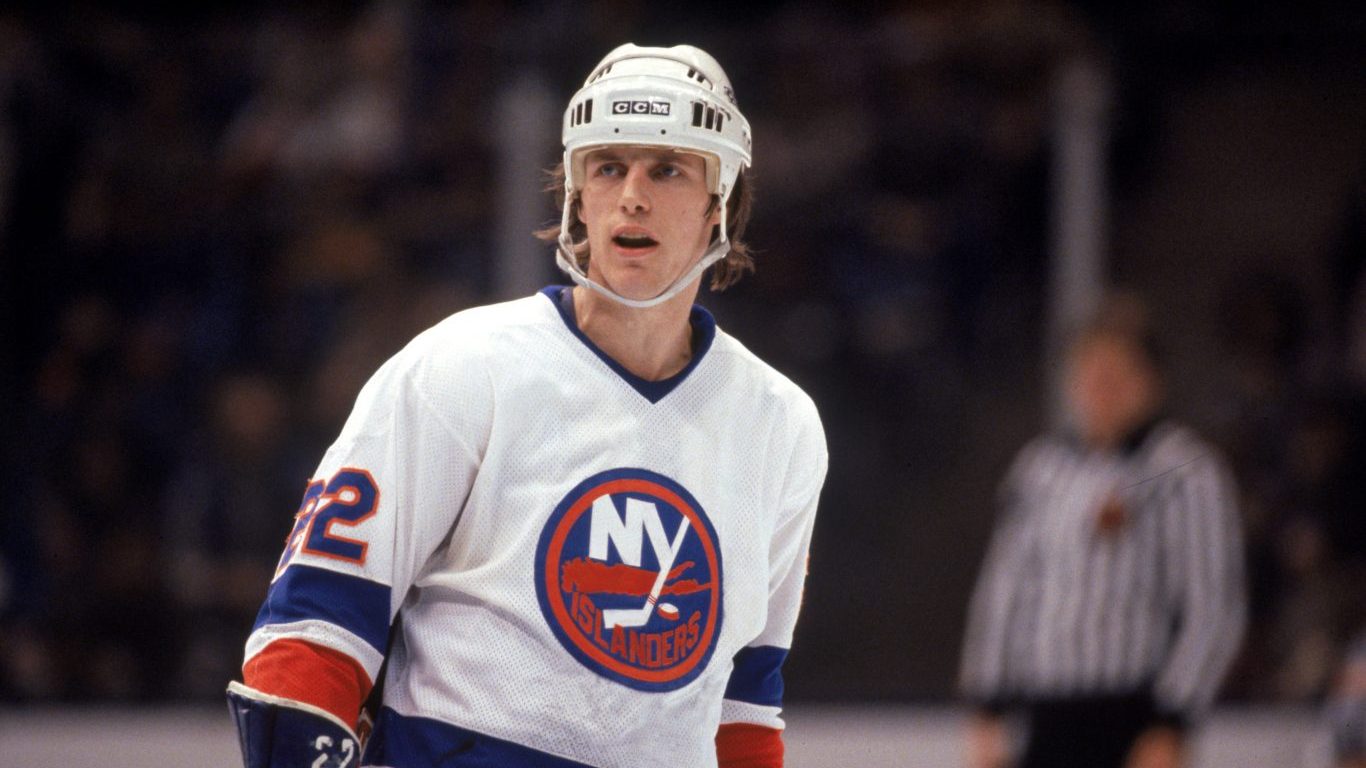
4. Mike Bossy
> Career: 1977-1987
> Team(s): New York Islanders
> Accolades: Hall of Fame, 8x All-Star, 4x Stanley Cup, Calder Trophy
Mike Bossy is one of the all-time great scorers in NHL history, notching over 50 goals in nine straight seasons — the only player to do so. In those years, Bossy helped the New York Islanders win four consecutive Stanley Cups, and he made eight All-Star teams. Unfortunately for Bossy, a nagging back injury ended his 10th season, and career, in 1987.
[in-text-ad-2]

5. Bo Jackson
> Career: 1987-1991 (NFL), 1986-1994 (MLB)
> Team(s): Los Angeles Raiders, Kansas City Royals, Chicago White Sox, California Angels
> Accolades: Pro Bowl, All-Star
Bo Jackson proved to be one of the greatest two-sport athletes ever. He is the only player to make the MLB All-Star game and the NFL Pro Bowl. On the football field, he was able to run around and over opponents. At the plate, Bo was a prodigious slugger, hitting over 20 home runs in his four full seasons with the Kansas City Royals. But while powering the Raiders to a playoff win in 1991, Jackson suffered a severe hip injury. The hip was fractured and dislocated in a way that stemmed blood flow to the area, ending his NFL career. Jackson returned from hip replacement surgery in 1993 and retired after the strike-shortened 1994 MLB season.
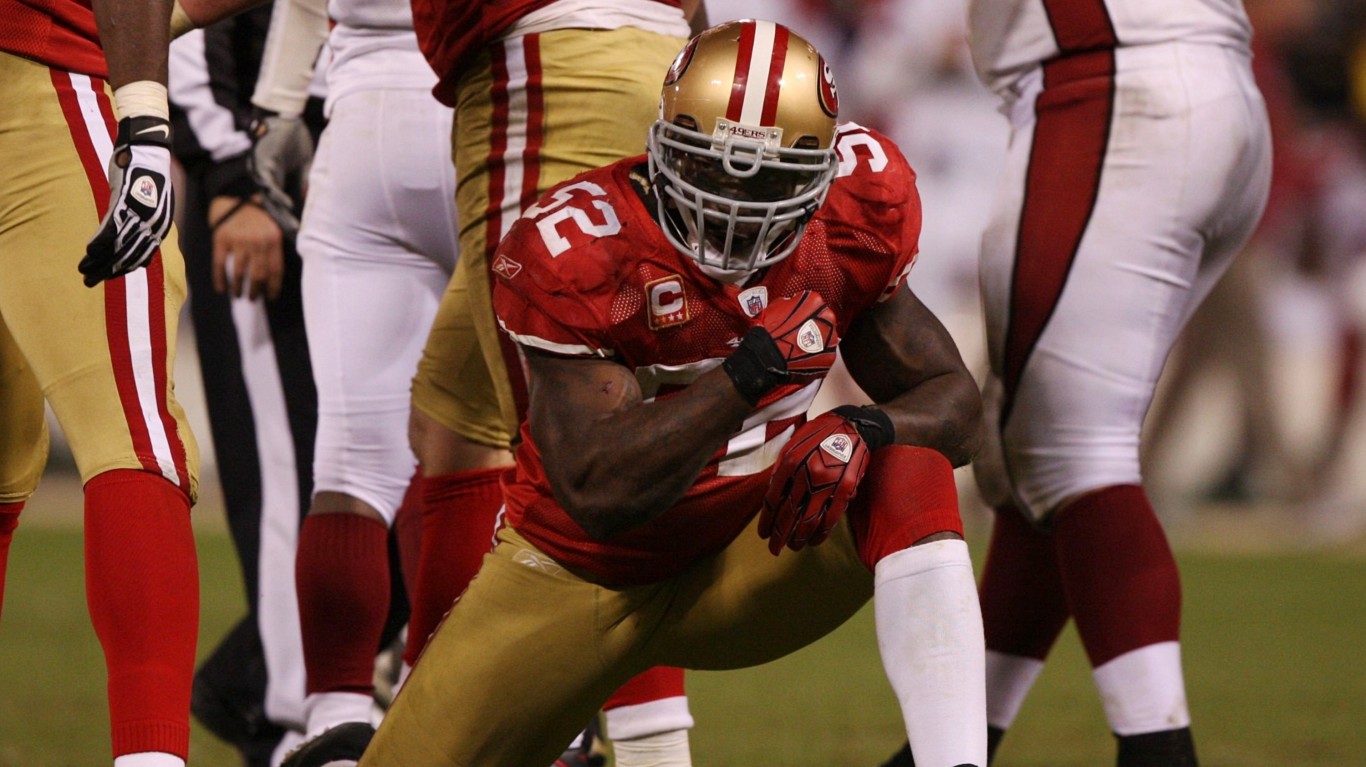
6. Patrick Willis
> Career: 2007-2014
> Team(s): San Francisco 49ers
> Accolades: 7x Pro Bowl, 5x All-Pro, Defensive Rookie of the Year
After establishing himself as the best middle linebacker in the NFL, Patrick Willis walked away in his prime. Willis made seven Pro Bowls and earned five All-Pro honors in his first seven seasons with the San Francisco 49ers, but his eighth season ended early after he injured his toe — an area that Willis later admitted had been hampering him for years. After that season, Willis said he could no longer play at the level he wanted and chose to retire. After football, Willis began working in tech and recently said he is also dabbling in real estate.
[in-text-ad]

7. Ralph Sampson
> Career: 1983-1992
> Team(s): Houston Rockets, Golden State Warriors, Sacramento Kings, Washington Bullets
> Accolades: Hall of Fame, 4x All-Star, Rookie of the Year
Throughout his first four seasons, Ralph Sampson demonstrated why he went first overall in the 1983 NBA Draft. The 7’4″ center won Rookie of the Year, averaging 21 points and 11 rebounds his first season, as well as made four straight All-Star teams. Being that tall takes a toll on the body, though, and Sampson struggled to stay healthy after injuring his knee in 1986. He was traded to the Warriors in 1987, but his production was in decline. His final three seasons, Sampson played in 61 total games before being waived by the Washington Bullets in 1992.

8. Bobby Orr
> Career: 1966-1979
> Team(s): Boston Bruins, Chicago Blackhawks
> Accolades: Hall of Fame, 2x Stanley Cup, 9x All-Star, 3x Hart Trophy, 8x Norris Trophy
Though he had a 12-year NHL career, Bobby Orr’s best days were behind him by age 27. Orr battled through well over a dozen knee operations to become one of hockey’s all time greats. Orr claimed a record eight Norris Trophies for the league’s top defenseman, in addition to three MVPs, two scoring titles, and two Stanley Cups. Unfortunately, his repeated knee injury ended his career early by NHL standards. In his final three seasons, Orr could only suit up a total of 36 games and retired at age 30.
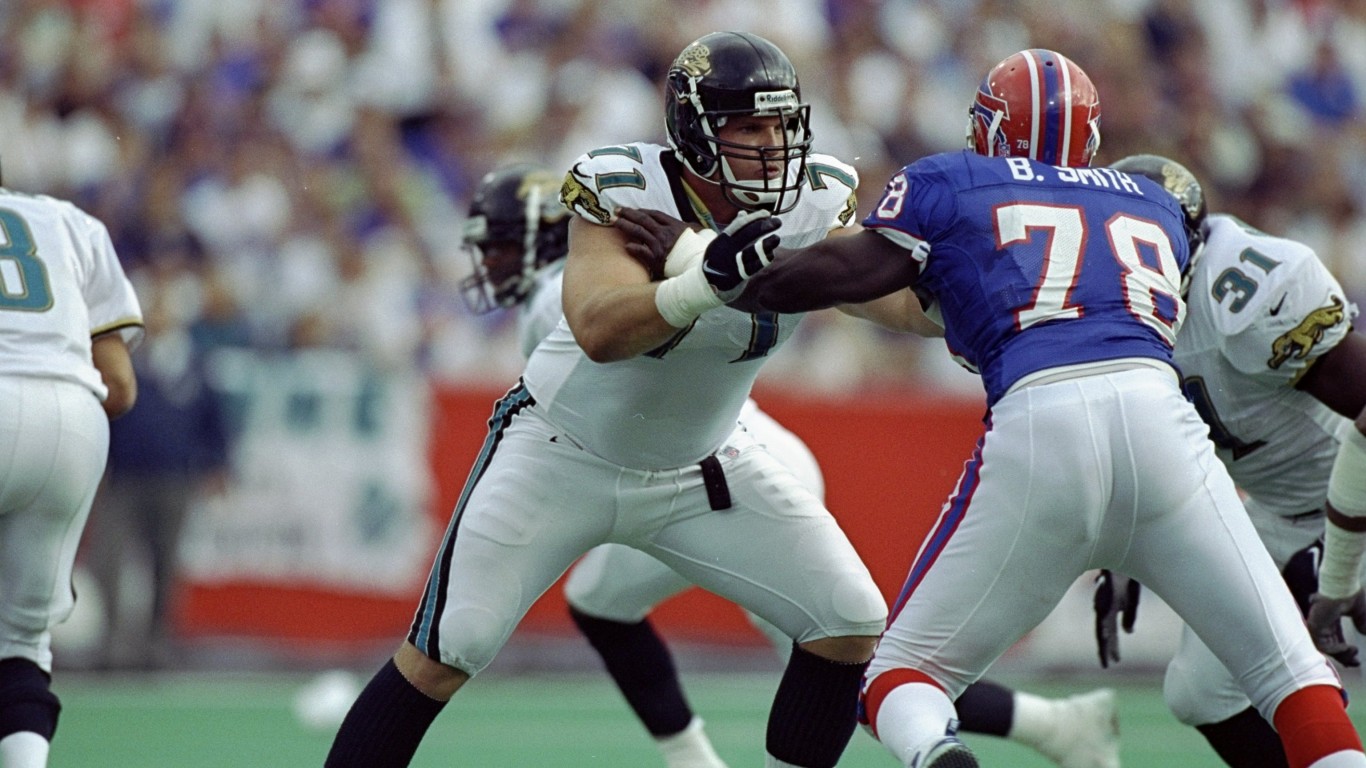
9. Tony Boselli
> Career: 1995-2001
> Team(s): Jacksonville Jaguars
> Accolades: 5x Pro Bowl, 3x All-Pro
Tony Boselli’s brief but terrific career is an interesting litmus test for the Pro Football Hall of Fame. The former Jacksonville Jaguars tackle played seven seasons, making five Pro Bowls and three All-Pro teams. His 2001 season lasted just three games before a nagging shoulder injury necessitated surgery. Boselli later told Vice he “wasn’t real happy with the surgery” and could not continue playing. The brevity of his career may be keeping Boselli out of Canton. He has been a Hall of Fame finalist each of the last four years but has not been made a Hall of Famer.
[in-text-ad-2]
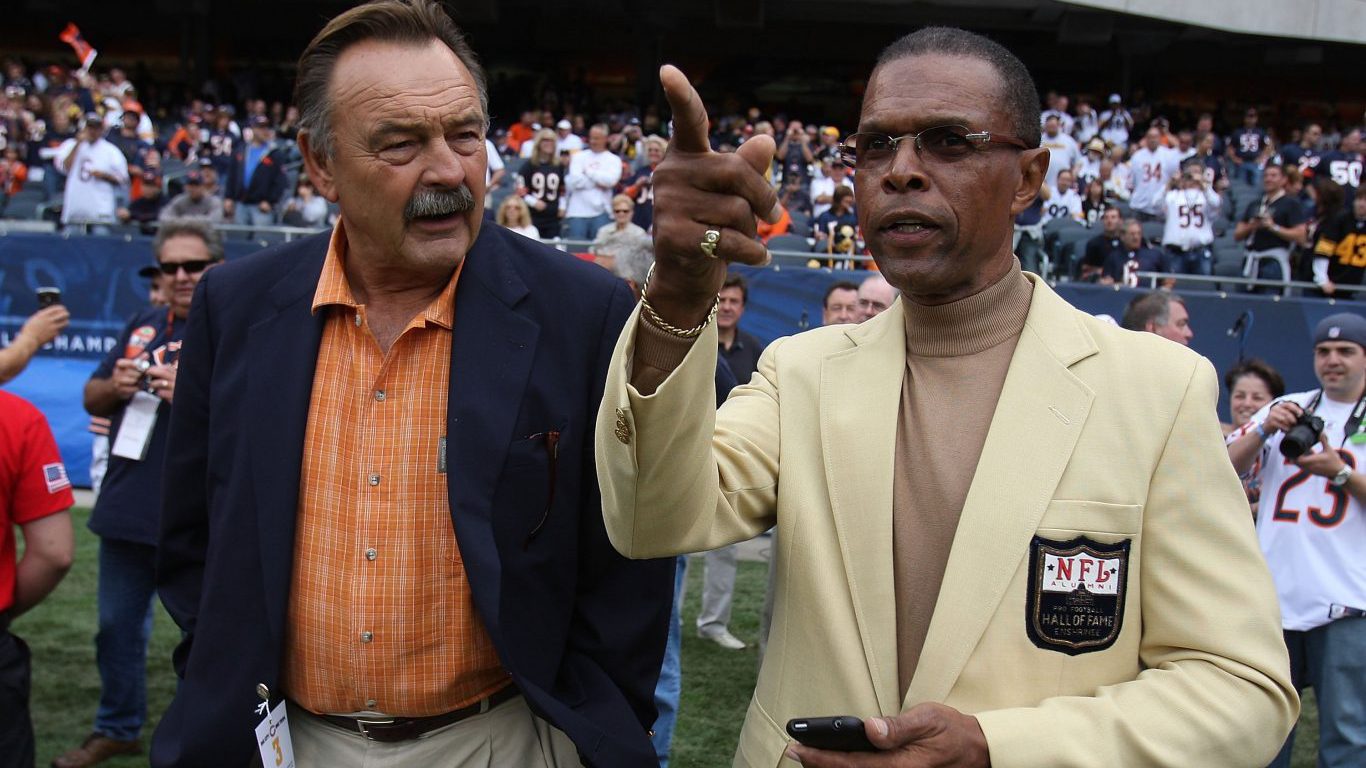
10. Gale Sayers
> Career: 1965-1971
> Team(s): Chicago Bears
> Accolades: Hall of Fame, 4x Pro Bowl, 5x All-Pro
Gale Sayers, nicknamed “The Kansas Comet,” was a running back for the Chicago Bears, and in his rookie year, he played one of the greatest games of all time. On Dec. 12, 1965, Sayers scored six touchdowns against the San Francisco 49ers in a Bears victory. Sayers rushed for four touchdowns, caught one pass for a TD, and returned a kickoff for a touchdown. He led the league in rushing twice in his seven-year career and averaged 5 yards a carry. Knee injuries limited Sayers to just 68 games in the NFL, but his brief brilliance, befitting his comet nickname, earned him a place in the football Hall of Fame.

11. Mark Prior
> Career: 2002-2006
> Team(s): Chicago Cubs
> Accolades: All-Star
Chicago Cubs pitcher Mark Prior was bursting with promise, making the All-Star team in his second season at just 22 years old. That year, he went 18-6 with a 2.43 ERA, but bad luck with injuries derailed his career. In 2003, he hurt his shoulder in a collision while trying to field a grounder. The next season he missed time with an Achilles tendon issue. In 2005, he suffered a broken elbow after being hit by a line drive. Prior underwent reconstructive shoulder surgery after nine games in 2006. He attempted several comebacks in the following years, but never pitched in the majors again.
[in-text-ad]

12. Sterling Sharpe
> Career: 1988-1994
> Team(s): Green Bay Packers
> Accolades: 5x Pro Bowl, 3x All-Pro
Sterling Sharpe was as dominant as he was dependable before injury ended his career. The Green Bay Packers wide receiver played all 16 regular season games in each of his seven NFL seasons. Sharpe led the NFL in receptions three times, touchdown catches twice, and receiving yards once. He suffered neck injuries in the two final games of the 1994 season. Medical tests found the hits loosened two of his vertebrae, and doctors recommended Sharpe end his career.

13. Brandon Roy
> Career: 2006-2012
> Team(s): Portland Trail Blazers, Minnesota Timberwolves
> Accolades: 3x All-Star, Rookie of the Year
Brandon Roy was on the path to NBA superstardom before his knees betrayed him. Roy won Rookie of the Year in 2007, then made the All-Star Game in each of the next three seasons, but a degenerative knee condition limited his career. After going under the knife six times, doctors found Roy had no cartilage left in his knees and recommended he retire, which he did in 2011. He attempted a comeback in 2012 but could play just five games before retiring again.
14. Tony Conigliaro
> Career: 1964-1971, 1975
> Team(s): Boston Red Sox, California Angels
> Accolades: All-Star
Boston Red Sox fans called him Tony C, and his career is considered to be one of the great what-ifs in baseball history. Conigliaro made his MLB debut at the age of 19 in 1964, and hit 24 home runs that season. The Boston All-Star was on his way to helping the Red Sox win the 1967 pennant when he was hit by a fastball from Jack Hamilton of the Los Angeles Angels. He suffered a shattered cheekbone, and the injury affected his eyesight so badly he missed the rest of the season and all of the 1968 campaign. Conigliaro did return to the game and won Comeback Player of the Year in 1969, but his vision was impaired and he retired after the 1971 season. He attempted a comeback in 1975, but that lasted just 21 games.
[in-text-ad-2]
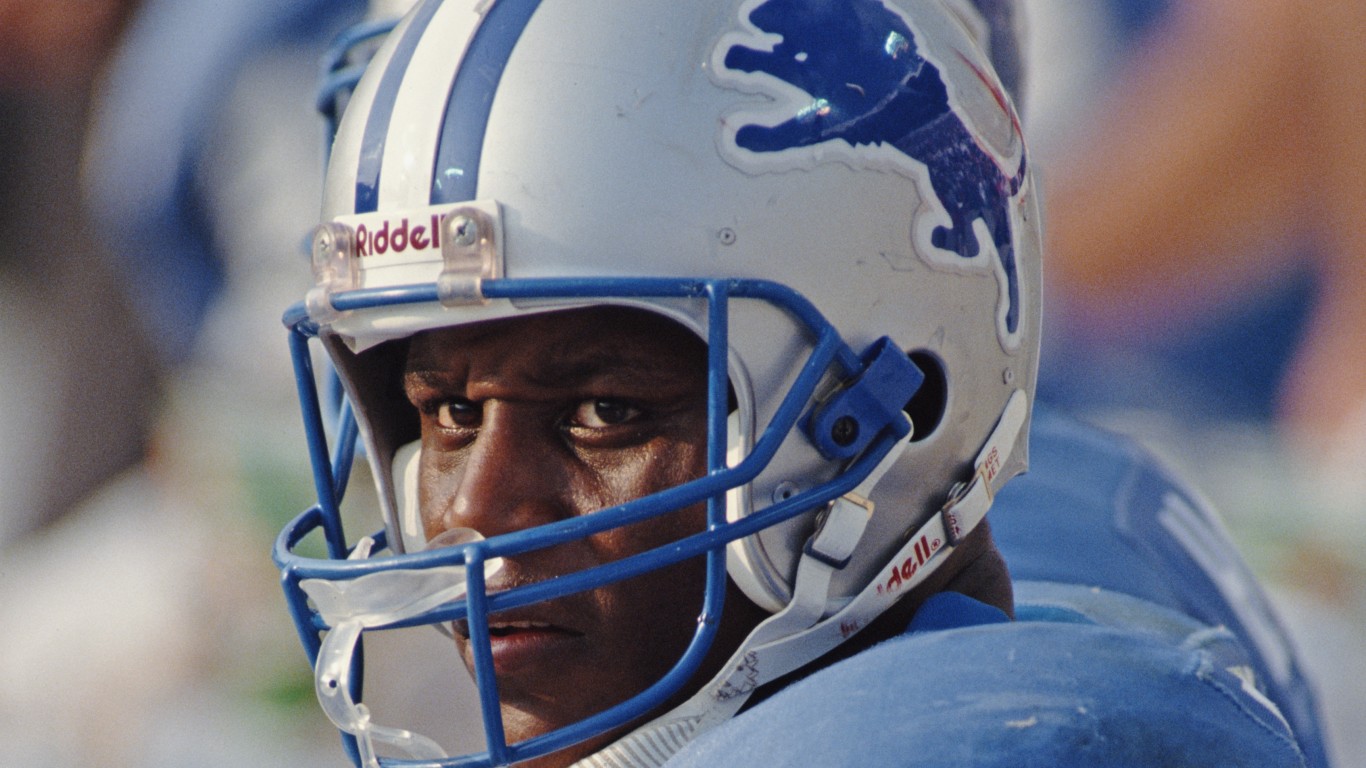
15. Barry Sanders
> Career: 1989-1998
> Team(s): Detroit Lions
> Accolades: Hall of Fame, MVP, 10x Pro Bowl, 6x All-Pro
After a decade in the NFL, Barry Sanders was close to Walter Payton’s rushing record. Although running backs tend to wear out around 30, Sanders still was at the top of his game at that age, making his 10th consecutive Pro Bowl. However, the running back then shocked the football world when he announced his retirement after the 1998 season. Sanders later said he was frustrated by the Lions franchise and decided to retire rather than play for a team that would not compete for championships.
16. Luke Kuechly
> Career: 2012-2019
> Team(s): Carolina Panthers
> Accolades: 7x Pro Bowl, 5x All-Pro, Defensive Player of the Year
Former Carolina Panthers linebacker Luke Kuechly ended his career in early 2020. One of the NFL’s best defensive players, Kuechly led the NFL in tackles twice and recorded over 100 tackles in each of his eight seasons. His hard-nosed style was not without consequences, and Kuechly suffered several high-profile concussions, causing him to miss multiple games in several different seasons. After the 2019 season, he announced his retirement.
[in-text-ad]
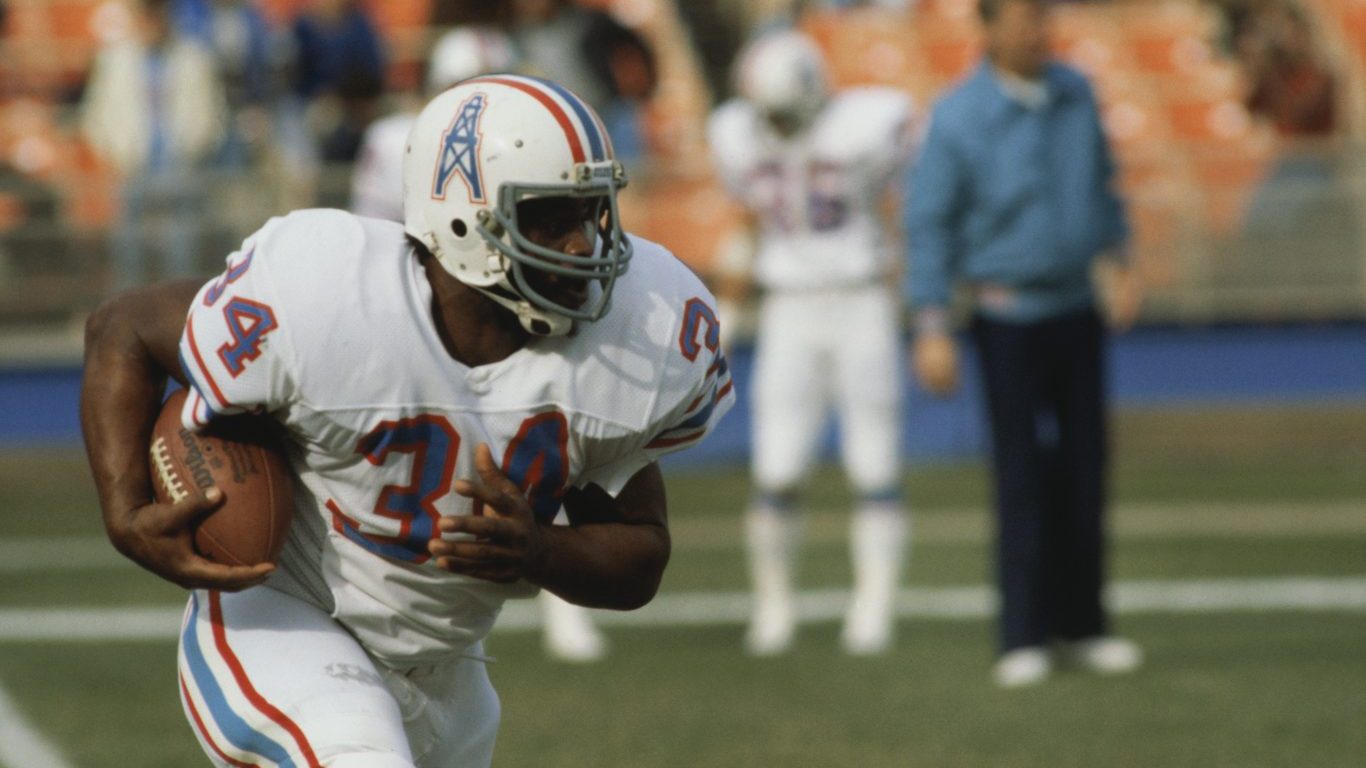
17. Earl Campbell
> Career: 1978-1985
> Team(s): Houston Oilers, New Orleans Saints
> Accolades: Hall of Fame, MVP, 5x Pro Bowl, 3x All-Pro, 3x Offensive Player of the Year
Running back Earl Campbell lived up to expectations after being drafted first overall in the 1978 NFL Draft. The Houston Oiler led the NFL in rush yards each of his first three seasons, earning three All-Pro nods, three Offensive Player of the Year awards, and the 1979 MVP. The physical demands of his position began to catch up with him and his production diminished after 1983. Campbell was traded to the New Orleans Saints mid-season. In the 1986 preseason, Campbell realized his body struggled to deal with the physical nature of the sport, and he retired.

18. Ken Dryden
> Career: 1970-1979
> Team(s): Montreal Canadiens
> Accolades: Hall of Fame, 6x Stanley Cup, 6x All-Star, 5x Vezina Trophy, Calder Trophy
Ken Dryden’s goaltending career with the Montreal Canadiens was brief — and glorious. In the eight years the alum from Cornell University minded the nets for the Habs, the 6’4″ Dryden compiled a record of 258-57-74, saved more than 92% of the shots on goal, and had a career goals against average of 2.24. He won the Vezina Trophy as the NHL’s top goalkeeper five times and made the All-Star team six times. Dryden, who marched to the beat of his own drum, sat out the 1973-74 to work at a Toronto law firm. He then returned to professional hockey and won four of his six Stanley Cups, going out a winner in 1979. Dryden said he retired to explore other interests, and he became a writer.
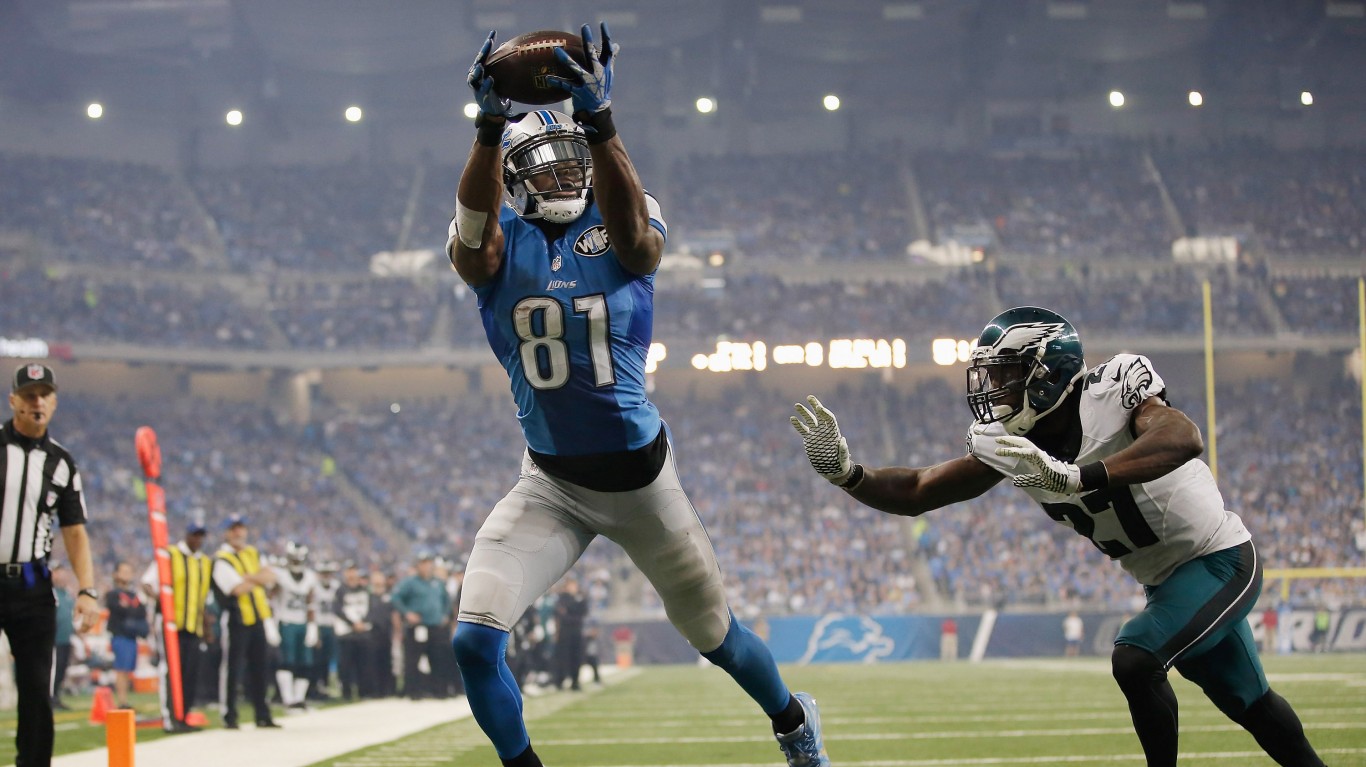
19. Calvin Johnson
> Career: 2007-2015
> Team(s): Detroit Lions
> Accolades: 6x Pro Bowl, 3x All-Pro
Calvin Johnson retired as one of the most dominant receivers in the NFL. Even in his final season in 2015, he posted an impressive 1,214 receiving yards. In 2012, Johnson set the single-season receiving yards record, with 1,964. In his later years, Johnson began feeling the physical strain of preparing to play and decided to leave the game. After retiring, Johnson told Sports Illustrated he questioned the Lions’ commitment to winning and may have kept playing if the team was better.
[in-text-ad-2]
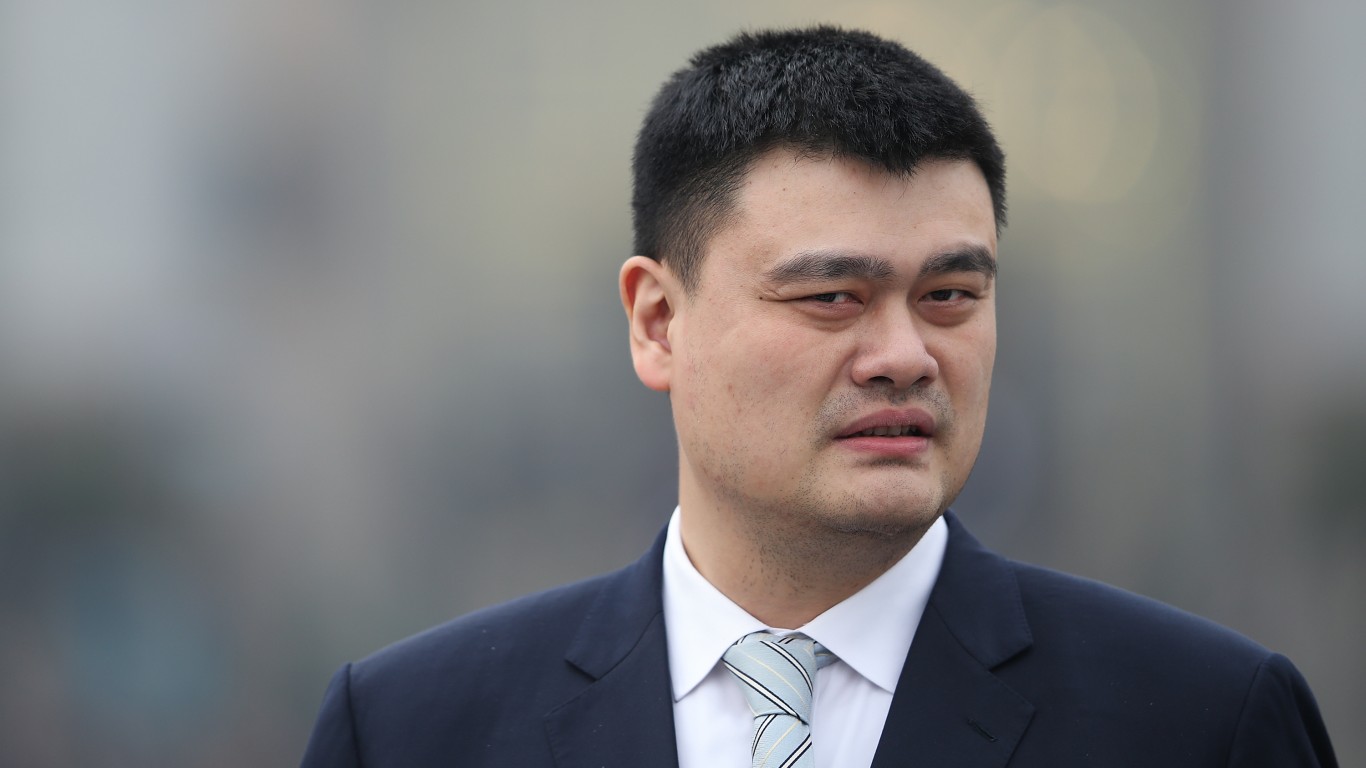
20. Yao Ming
> Career: 2002-2010
> Team(s): Houston Rockets
> Accolades: Hall of Fame, 8x All Star
The 7’6” center Yao Ming became, in 2016, the first player from China to be inducted into the Hall of Fame. Yao was already a star in China when he was drafted as the first overall pick by the Houston Rockets in 2002, the first international player picked first overall. Yao proved he could handle the NBA competition, averaging 19 points and 9.2 rebounds a game in his eight-season career. He was an eight-time All-Star, but his career was cut short during the 2010-2011 season because of nagging foot injuries.
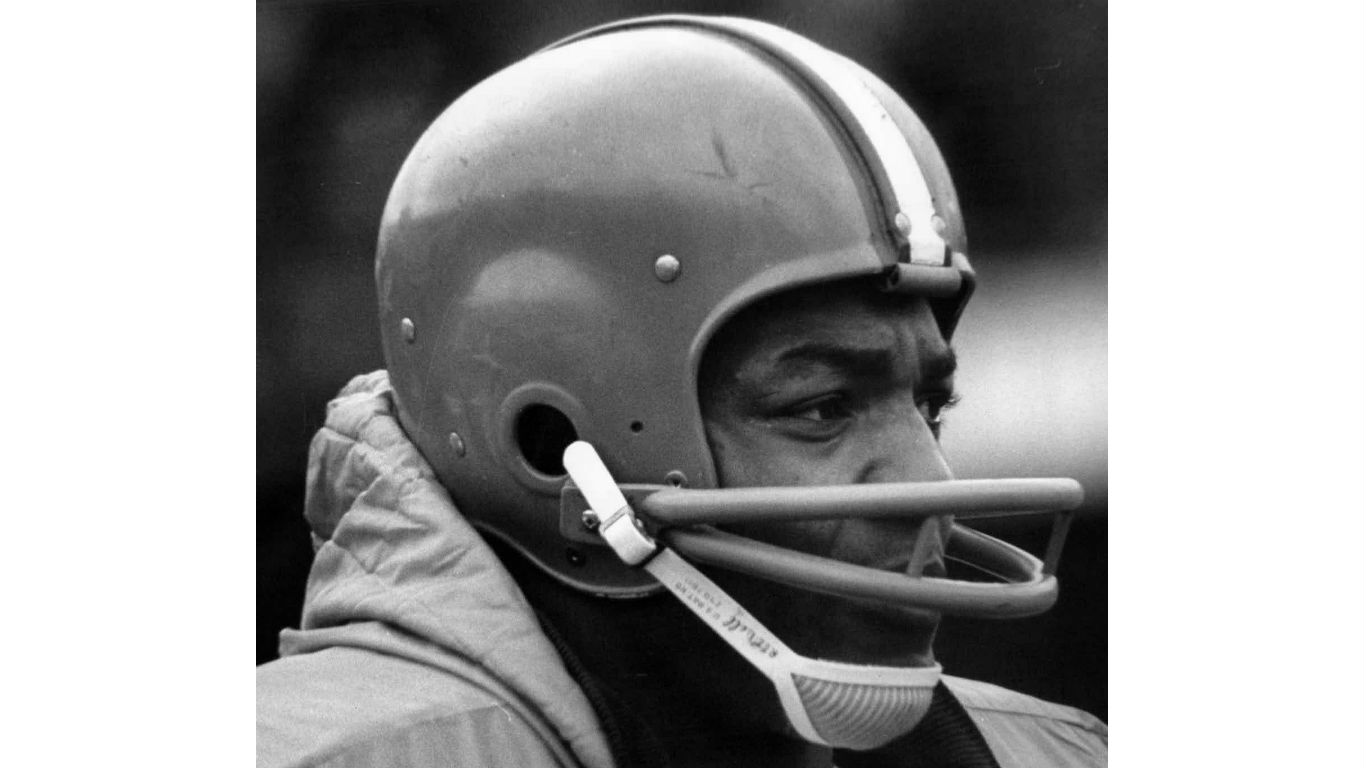
21. Jim Brown
> Career: 1957-1965
> Team(s): Cleveland Browns
> Accolades: Hall of Fame, 3x MVP, 9x Pro Bowl, 8x All-Pro, NFL champion
Few players dominated the NFL over a brief period as Jim Brown has. The 6’2″, 232-pound running back combined speed and power to lead the Cleveland Browns to the world championship in 1964, the last time the Browns were NFL champions. Brown made the Pro Bowl in all nine of his seasons with the Browns, was an All-Pro eight times, won MVP three times, rushed for more than 1,000 yards seven times, and averaged 5.2 yards a carry for his career. Brown retired after the 1965 season to pursue a career in motion pictures, where he starred in such films as “The Dirty Dozen” and “Ice Station Zebra.”
[in-text-ad]
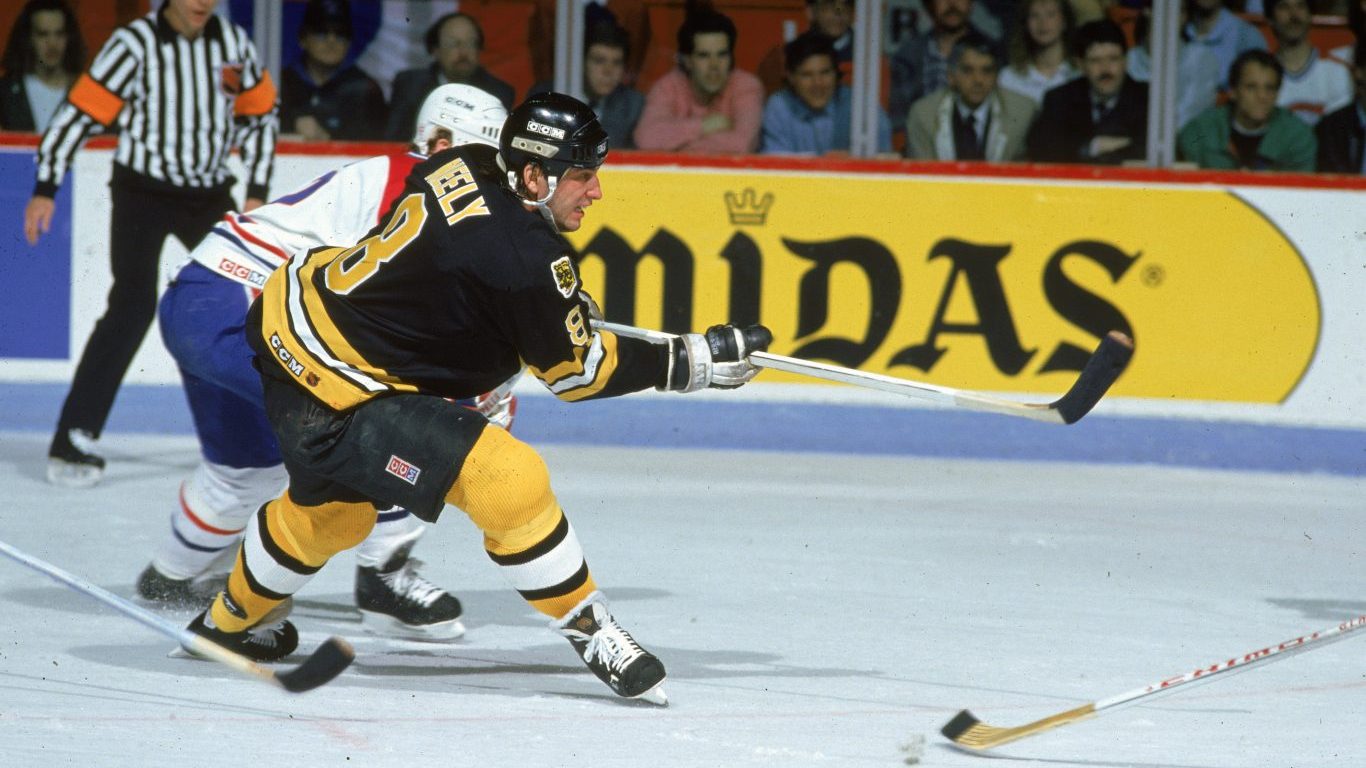
22. Cam Neely
> Career: 1983-1996
> Team(s): Boston Bruins, Vancouver Canucks
> Accolades: Hall of Fame, 4x All-Star
Even though Cam Neely played 13 seasons in the NHL for the Vancouver Canucks and the Boston Bruins, his career ended at age 30 after the 1995-1996 season because of injuries. After Neely was traded to Boston in 1986, the 6’1″ forward became a reliable scoring machine, scoring 35 or more goals in each of his next five seasons with the Bruins, including two seasons of more than 50 goals. Then injuries began to take their toll, leading to his announcement in 1996 that he was retiring because of a degenerative hip. The four-time All-Star was inducted into the hockey Hall of Fame in 2005.
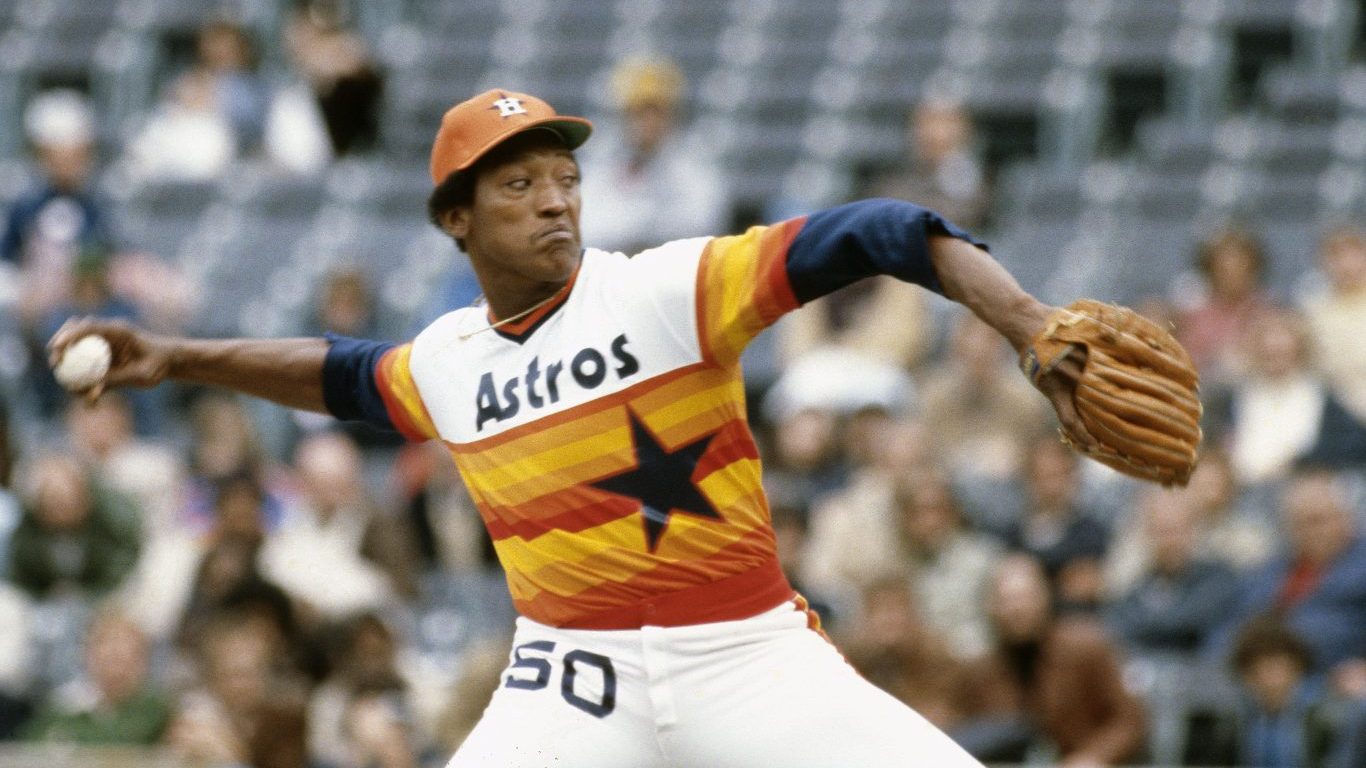
23. J.R. Richard
> Career: 1971-1980
> Team(s): Houston Astros
> Accolades: 1x All-Star, ERA title
The hulking 6’8″ J.R. Richard was an intimidating presence on the mound for the Houston Astros. From 1976 to 1979, Richard won 18 or more games in four straight seasons. Starting in 1975, he pitched more than 200 innings a year for five straight seasons. He also struck out more than 300 hitters twice, in 1978 and 1979, leading MLB both times. However, tragedy struck the righthander when he suffered a stroke in 1980 that shortened his career. Richard took a long time to recover. Along the way, he went through two divorces and financial ruin. For a while, he was homeless. Richard was able to rebuild his life, became a minister, and began working with youth in Houston.
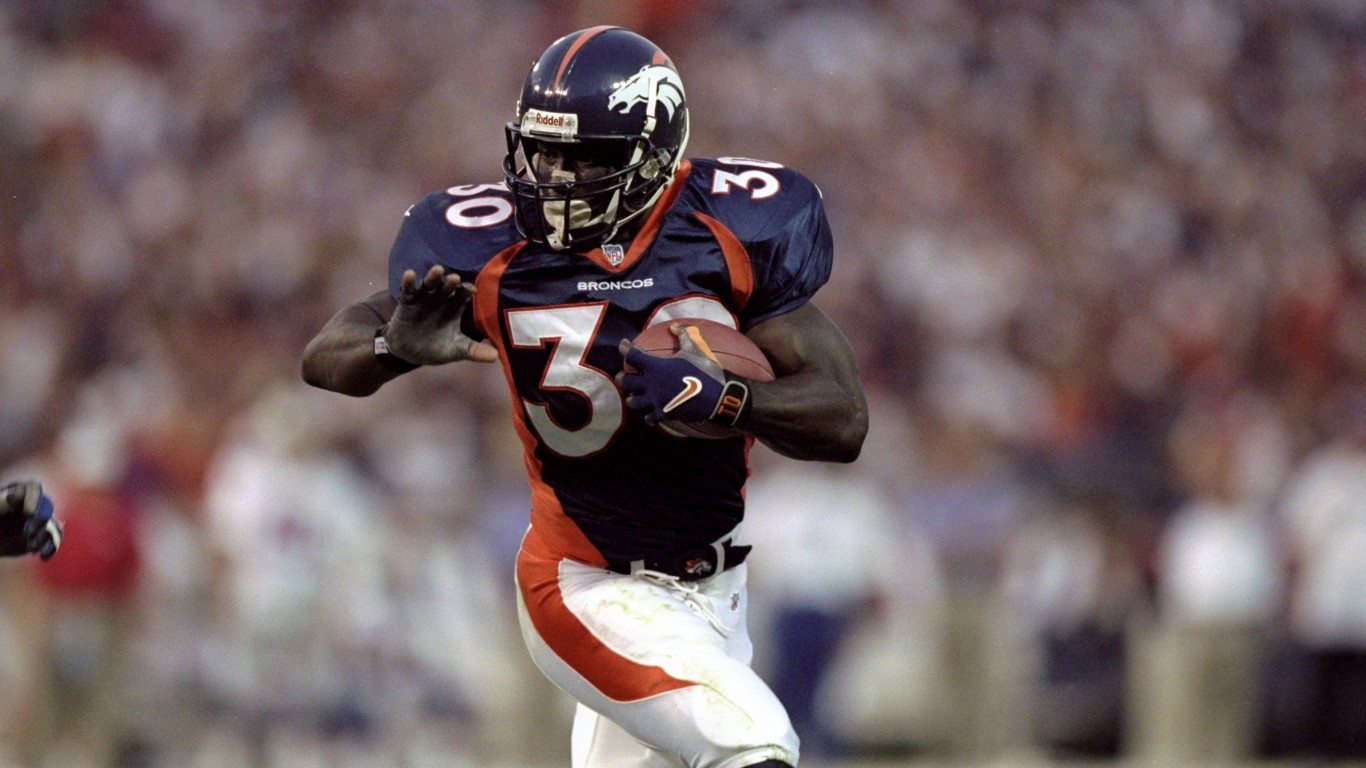
24. Terrell Davis
> Career: 1995-2001
> Team(s): Denver Broncos
> Accolades: Hall of Fame, MVP, 3x Pro Bowl, 3x All-Pro, 2x Super Bowl champion, 2x Offensive Player of the Year
Sixth-round pick Terrell Davis quickly became a surprise star. The running back for the Denver Broncos won the starting job his rookie season of 1995. In 1996, he made his first Pro Bowl and All-Pro teams. In 1997, he earned those honors again, while helping the Broncos win their first Super Bowl in franchise history. His best season came in 1998, when he rushed for over 2,000 yards, earning MVP and helping Denver repeat as champions. Everything, however, came crashing down when he tore his ACL early the next season. He missed most of the 2000 season due to that injury as well as a stress reaction in his leg. Davis played eight games in 2001 after getting surgery on his arthritic knees and retired in 2002 before he could play a game that season.
[in-text-ad-2]

25. Pete Maravich
> Career: 1970-1980
> Team(s): Atlanta Hawks, New Orleans/Utah Jazz, Boston Celtics
> Accolades: Hall of Fame, 5x All-Star
Pete Maravich’s prolific-scoring reputation earned him the nickname “Pistol Pete.” At LSU, he was a three-time All-American who averaged 44.2 points per game. The guard brought his flashy ball-handling skills and scoring prowess to the NBA and became a five-time All-Star, won one scoring title, and earned a place in the Hall of Fame. Over an 10-year career with the Atlanta Hawks, New Orleans/Utah Jazz, and the Boston Celtics, he averaged 24.2 points per game. Knee injuries shortened his career, and he retired after the 1979-80 season.
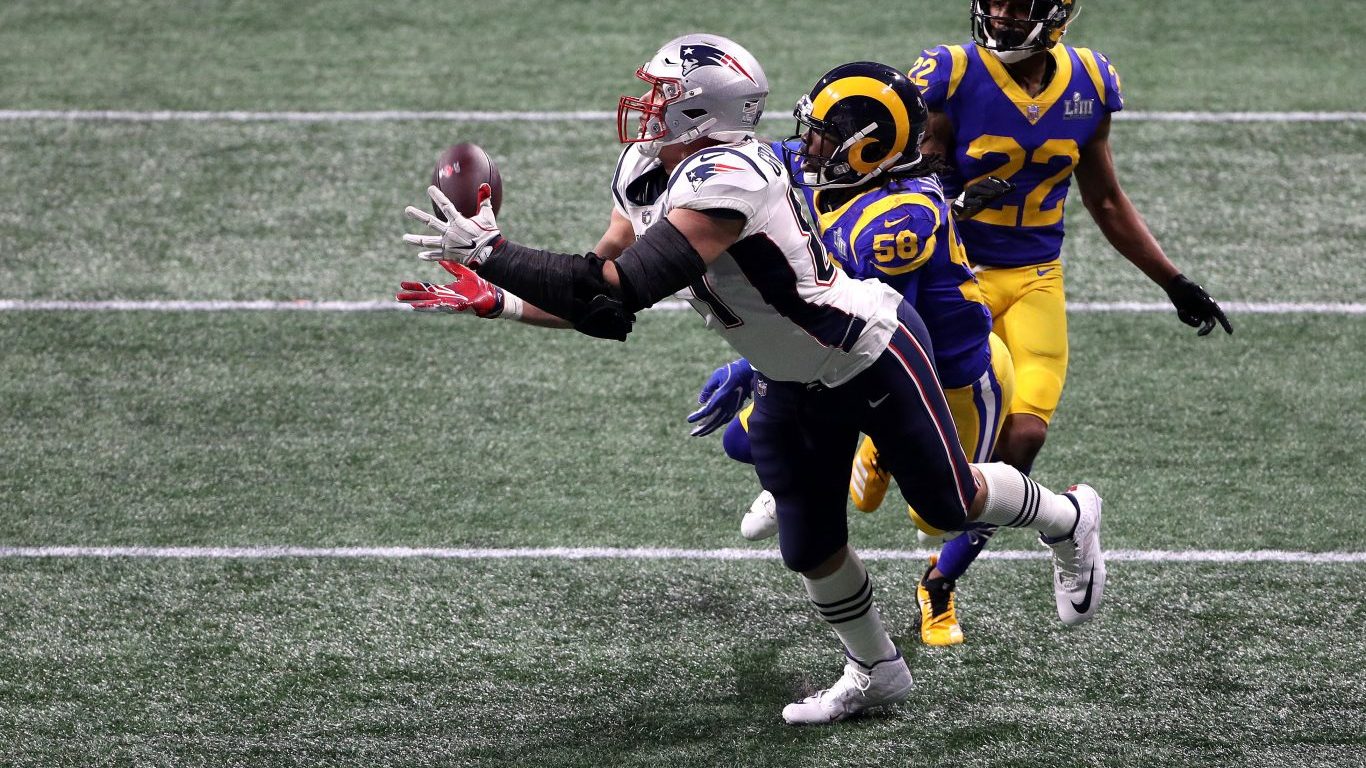
26. Rob Gronkowski
> Career: 2010-2018
> Team(s): New England Patriots
> Accolades: 5x Pro Bowl, 4x All-Pro, 3x Super Bowl champion
Rob Gronkowski was the ultimate match-up problem for NFL defenses. At 6’6″, the New England Patriots tight end was too big for defensive backs to cover and too fast for linebackers to keep up with. He was consistently named the best tight end in football when healthy. Gronk only played two full seasons in his first two years in the NFL. After that, he suffered injuries to his ankle, arm, back, knee, hamstring, chest, and thigh, not to mention numerous concussions — some of which may have been undiagnosed. Gronkowski said concerns about head injuries and their long-lasting effects were a factor in his decision to retire at 29.
Start by taking a quick retirement quiz from SmartAsset that will match you with up to 3 financial advisors that serve your area and beyond in 5 minutes, or less.
Each advisor has been vetted by SmartAsset and is held to a fiduciary standard to act in your best interests.
Here’s how it works:
1. Answer SmartAsset advisor match quiz
2. Review your pre-screened matches at your leisure. Check out the advisors’ profiles.
3. Speak with advisors at no cost to you. Have an introductory call on the phone or introduction in person and choose whom to work with in the future
Thank you for reading! Have some feedback for us?
Contact the 24/7 Wall St. editorial team.